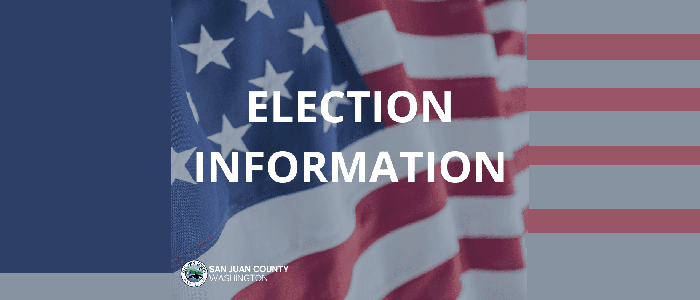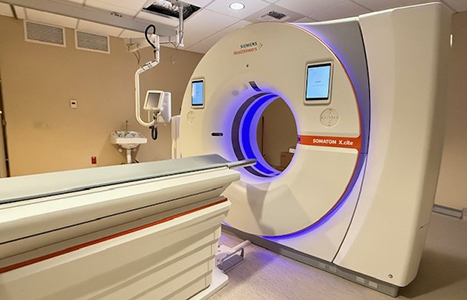||| FROM JUSTIN PAULSEN |||
The staff and volunteers of Orcas Fire and Rescue have been responsible for providing invaluable medical and emergency services for myself and my family multiple times in my over 20 years living on Orcas Island. Our dedicated Fire Commissioners give hundreds of hours of time to our community in what is a relatively thankless job – especially in the current political climate. To a person, every one of them deserves our community’s thanks and appreciation. That said, I will be voting NO on the upcoming Fire District Levy. Clearly, the Fire District needs a radical increase in funding, but this levy is about far more than just a “tax rate”; It’s about Trust, Structure and Flexibility.
In 2014, the Orcas community approved a levy lift that was intended to provide for the financial needs of the District for the following 10 years and provide a reserve moving forward. That Levy included a lump sum for Capital and Operational needs. In 2023, we are now coming to a reckoning point that tells us that that levy was not sufficient. Operational and administrative costs have ballooned well beyond projections and inflation-driven prices have shot up faster than the state-restricted levy adjustment allows for. We now face a Department looking at serious financial stress heading into 2025 and equipment that according to staff is “unsafe” in its current state. The current levy proposal asks us to follow the same path as the 2014 levy – permanently, but to expect different results. That is why I’ll be voting NO.
Fortunately, we have almost a year and a half to address the growing financial stress that the Department faces. The department is fully funded through the end of 2024. This gives the community time to work with the new Commission elected in November of this year to put something on the ballot that fits our community and the economy. We will have the opportunity to create separate funding mechanisms that protect apparatus replacement funds from becoming victims of operational issues. We will have the opportunity to discuss creating a levy(s) which offers the District more flexibility to adjust for inflationary pressures. We will have the opportunity to work with a fully elected Board of Commissioners, a newly appointed Chief and most importantly the Public to craft a way forward built on trust and public engagement.
Please join me with a “NO” vote and commit to working as a community in creating something worthy of a “YES” vote in 2024.
**If you are reading theOrcasonian for free, thank your fellow islanders. If you would like to support theOrcasonian CLICK HERE to set your modestly-priced, voluntary subscription. Otherwise, no worries; we’re happy to share with you.**









Well said, on every point, Justin. I’ll be joining you in voting no, for the articulate and thoughtfully presented points you laid out. Thanks for giving a little more history of the current levy and what is was supposed to do; even more convincing. I like your upbeat and optimistic viewpoint that we can solve this in the coming year and a half and come up with a levy that is better suited, more flexible, and would creates separate funding to protect apparatus replacement funds. Thanks!
Thank you again Justin. Well done.
Justin,
I have been mulling over what to write and how to write it. I wanted to say something succinct, optimistic, and something that felt true to me and my family. You said it, better than I could have. We were having conversations about increased calls, staffing needs, and vehicle acquisition in committees in 2015 with the goal of OIFR not finding itself at the point we are at. It’s a time to regroup and plan ahead and know where the ship is being steered in the next decade. Vote NO…for now with a goal of a better levy and a more concise vision in 2024.
Though I have only been on the Commission for a little over two months, you only need to look at the information on the OIFR site to see that they will not have enough money to make payroll the last three months of 2024. If this levy does not pass, the levy will be asked for again at the same amount because that is what is needed to maintain our current level of service and to set money aside for equipment in 10 years.
Splitting the levy is not an option because an operational and a capital are both needed to support the island. What good is it if an operation levy passes and you don’t have the equipment. What good is a capital levy if you don’t have the personal.
A bond? Interest rates are low and not looking like a good investment. MM , are paying better than bonds
As a contractor, what do you do if you don’t have the money to meet payroll or pay your creditors? Cut back services. I listened to the EMS take two calls on Friday within 15 minutes of each other. Both were airlift cases. It’s a good thing there wasn’t a third call.
I have also voted against the levy, this time around. Last time a Fire/EMS levy was on the ballot, I enthusiastically voted Yes and encouraged others to do the same. Living in a remote location, I value EMS and fire services, and understand the inherent logistical challenges of the islands, as well as the associated costs.
Currently, our fire department is in transition; there is no chief, and most of the commissioners were appointed rather than voted in.
As a property owner who would be paying this not trivial tax increase, I would like to wait until there is a board of commissioners that more accurately represents the concerns of the community, with full financial transparency.
I value the first responders and support them 100 percent. I know that residents and visitors are provided with the best possible care in an emergency. My vote against the levy is not about the quality of the first responders.
It’s unfortunate that I feel the need to state that obvious fact, but the leadership at Orcas Fire has consistently attempted to gaslight the community any time their integrity or actions are questioned; “if you’re not with us you’re against us” seems to be the ethos.
As one example, I recall an incident where the details of a tragic accident were discussed in far too much detail in a public meeting, likely violating HIPAA and definitely exposing a crass and disrespectful approach to patient care. OIFR leadership was called out on that, and refused to respond, to my knowledge.
There was also a recent post on social media claiming that OIFR has a tradition of doing a particular training regimen in reverence to the Granite Mountain Hot Shots tragedy of 2013. Find me one OIFR member who is aware of and practicing this “tradition” and I’ll buy you a beer. OIFR leadership used a tragedy to manufacture credibility. How low can you go?
Both of these instances illustrate a lack of integrity and a willingness to manipulate the public. I’m not interested in opening my pocket book for folks who operate in that manner.
In its current state, Orcas Fire doesn’t have my vote to get more funding..
To be perfectly clear, I have no doubts that the people providing care are doing their jobs exceptionally well. However, the leadership at OIFR is problematic and has been since Scott Williams, the previous chief, was appointed. He’s gone now (thankfully) but a replacement hasn’t materialized and the combination of an assistant chief stand-in and a board of commissioners who weren’t voted in does not inspire confidence.
OIFR, sort out your management practices, learn about accountability, and try again next year.
Jim,
First off – I am very glad that you stepped up to fill the role of Fire Commissioner. I have deep respect for the service that you have provided to this community and continue to provide. As I said above – Serving as Commissioner is a thankless job and I have deep respect for anyone willing to devote their time to the betterment of this community.
I would love to have a discussion of why I believe that periodic bonding for capital expenses would be a better approach for the department. My primary concerns, as I laid out in a more detailed letter to the OIFR Commission last month, have less to do with the overall cost of this Levy and more to do with structure. I am more than slightly worried to see that the department has the same amount budgeted for the purchase of a fire engine in 2024 that it does in 2034 (OIFR Financial Sustainability Results 5/15/23) . I’m not an expert in cost analysis for fire equipment but I would imagine the 10 yr inflated cost of a 750000 engine would make the 2034 engine more like 980,000 (using the 31% CPI inflation from 2014-2023).
I did as you asked and scoured the Levy Documents and did not see a specific budget shortfall projection for 2024. That said, I dove into the 2023 budget from the Board Documents and see that OIFR entered 2023 with a +/- $1.4 million starting balance. I see that for the end of the 2023 budget that projected out, the ending fund balance projects to be just over $700k. For 2024, that would put OIFR with a $700k carry-over and a projected tax revenue of something like 2.35 million, for a total cash available (outside of grant and other funding) of $3.05 million. The projected budget of OIFR is 3.025 million. I’m not saying it’s a comfortable spot to be, but there appears to be enough money to fully fund both Operations and Equipment as outlined in the 10-year Master Funding Plan. I do agree, however, that rolling into 2025 the Department will face a shortfall ahead of tax collections (April) of 2025.
Ultimately, the only choice at this point for the community is either a Yes or a No on this levy. If it’s a YES, then we can move forward and those of us who are opposed to the levy will have to be more active in the department to assure that we don’t see a repeat of the last 10 years. If it’s a NO, then I will be one of the first in line to dig-in and join in the process of crafting something that works for our community going forward. In either case, we are all part of the solution for the success of the department.
Justin. As always, your points are spot on.
Jim. We all know both are needed. A community backed bond and a community backed levy can happen. Please provide the link where OIFR has insufficient reserves to make payroll in Q4-2024. I do not see it and there are at least a quarters reserves on the books, or there should be
It’s disheartening to be “appreciated” but not supported. Our 2nd out ambulance has a shot transmission. The backup now in service has no air conditioning. 70% of our volunteers AEDs have expired batteries and pads. Our trucks’ average age is 17 years when it should be 10-12.5 to be “on schedule”. Every proposed alternative I’ve heard is either illegal, more expensive or late to task. Inflation has been 24% since 2017 and our revenue has grown 3%. – it’s maybe ok for parks and rec to take financial risk but a 3-4 month window of vulnerability for an essential service seems foolhardy. – Betty, we use the Granite Mountain Hotshot tragedy as a case study for training. During that training, we include a physical training aspect in memory of those lost. Maybe we shouldn’t publicize anything we do but if you call Kat Barnard, she can reach out to everyone that was at that training to see if they want your beer. I missed that training because I was at work. Unless I’m off island though, you’ll see me on the next wildland fire, regardless of funding.
Justin, I was part of the group that evaluated apparatus fleet status and needs. I argued for an inflation adjustment in the out years. I think everyone agreed and knows that the cost of trucks isn’t going to be flat but we faced the reality that this community probably wouldn’t support even the cost when we used a “flat” model. So you’re saying now we should have asked for more and asking me to believe that it would have been more supportable at a higher number because it would be more realistic? I’ll go back and adjust that spreadsheet for inflation and add that into our next ask.
Betty, You owe me a beer!
Yes to what Justin said in his comment; if this levy somehow passes, those of us opposed to it must take an active role with the Fire Dept, show up at meetings, give out citizen minutes on what happens, ask questions, run for seats, FOIA requests as necessary, listen to past and present EMTs and firefighters so we don’t end up even worse than this. That’s what it takes; citizen involvement. If the levy fails, we still can’t go to sleep. A taxing district is only as good as its commissioners and how well they can handle tough questions from their base, and work with and for the Public whose taxes they are spending. That’s how democracy and transparency works.
I could not say it any better. This needs a big “N0” for now.
While I don’t have a copy of the previous resolution for the current levee, it is true that when a levee is written, it states for collection through X date and is then funded through the next year, as tax is collected in one year and then dispersed the following. So for example, if the District wrote in the resolution language such as “through 2024” they would be receiving those 2024 tax collected funds through 2025. I’m not sure if the District is even aware of this. The key to find out is a copy of the old resolution and verification through the SJ County Auditor’s Office. All other Jr. Tax Districts in the state follow this same timeline when writing levees for vote – it is for collection one year and funding the next.
“A taxing district is only as good as its commissioners”. Having watched today’s BOIFC mtg. I find it worth mentioning that there was no introduction of the new Financial Manager, Audria MClain, to the some 27 participants on ZOOM and/or the wider taxpaying public. How could thy have missed on this one?
She is/will be a key player going forward . The expertise she brings to the position should be shared . This is the sort of oversight that needs to be remedied if we are to move forward in trust.
Jillian- just a quick point for clarity of the readers.
Tax revenues are distributed in the same term in which they are collected. I.e. the revenue stream which operates the department currently is the 2023 property tax collections. There is not a trailing year of funding following collection of property taxes.
The existing levy allows the department to collect at the allowable rate through 2024 (current amount + 1% + new construction). In 2025, absent a replacement levy, the levy lid would reset the base, statutory rate (creating what is referred to as the “cliff”)
If the current levy lift proposal passes, the department can extinguish the remaining year on the previous levy and input the new levy lift rate for 2024. At that point, the proposed levy amount would become the new “floor” for all years going forward because this proposal is permanent in nature.
It may also be worth noting that if/when the new levy is input, the actual dollar amount to be collected will not be known until the new property valuations are issued ahead of the taxing period. It is likely that the collection amount will be higher (perhaps significantly) than the budgeted projection if current property valuation trends continue. The 1% increase restriction will then take effect for the life of the new levy, guaranteeing another levy cliff, and a similar conversation regarding revenue shortfall in the near-mid future.